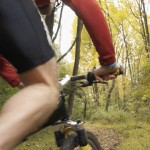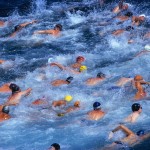 Consider riding bikes for fun as a family. Pick up a bike map at your local bike shop, sit around the kitchen table together and plan a route for a group pedal.
Consider riding bikes for fun as a family. Pick up a bike map at your local bike shop, sit around the kitchen table together and plan a route for a group pedal.
Safety is paramount when riding with little ones. Helmets are a must for all riders. Teach kids these principles so they became safe riders:
Kids in the middle. Riding with one adult in front and one adult behind is a way to make sure everyone stays safe and with the group.
Buddy-up. The buddy system still exists because it works. For big groups, each rider should choose another to keep an eye on.
Focus forward. Reminding kids to focus their eyes forward at all times will insure they see obstacles in the road such as acorns, bumps in the road, tree branches and the like.
Shout it out. When riding with others, communicating about upcoming obstacles or changing direction is nice habit to put in place. For example, simply pointing at the ground as you’re riding by a hazard on the bike path will alert those behind you to something in the road they should be aware of.
Keep it steady. Riding at an even pace adds fitness benefits, but more importantly allows those around you to anticipate your moves. Darting in and out of traffic or speeding up and then randomly stopping creates a hazard to those around or behind you.
Yield to cars. Just because a cyclist legally has the right of way, doesn’t mean the driver sees them. Always assuming the driver does not see you, is a great rule. When in doubt, simply teach your kids to pull to the side of the road, stop and wait for the car, other cyclist, pedestrian, etc to pass.
Rules of the road apply to cyclists too. Cyclists should obey all road rules just as they are required as in a car. For example, teach kids to stop at stop signs, stop for red lights and pedestrians, ride on the correct side of the road, ride in the bike lane single file, and signal to motorists their course (right turn, left turn, etc.)
Pass on the left only. Slower riders should always ride on the right side of the bike path or road, allowing other riders to pass you on the left.
Be seen. Insist every rider wear visible clothing. Choose bright colors, reflectors or even a flashing light that attaches to the seat post is a great idea to insure visibility to cars, other riders and pedestrians.
Ride for fun and boost fitness for the whole family. No mileage or speed requirements. Stop and smell the flowers or check out an interesting sight along the way. Pack a lunch or snacks and sit and relax at your destination for awhile. Just go!
 Subscribe
Subscribe
